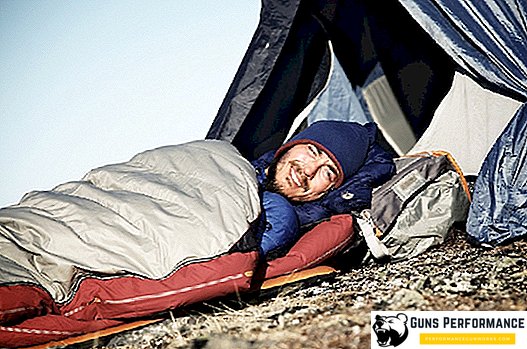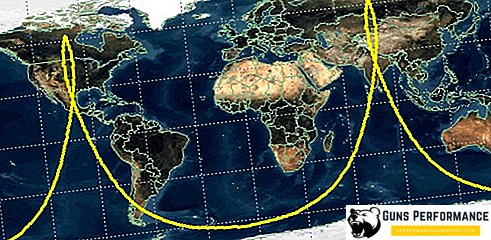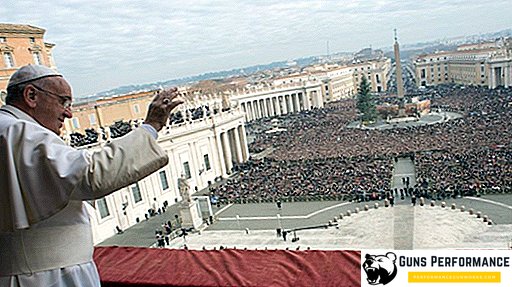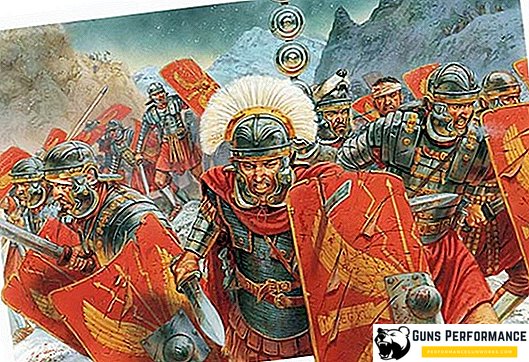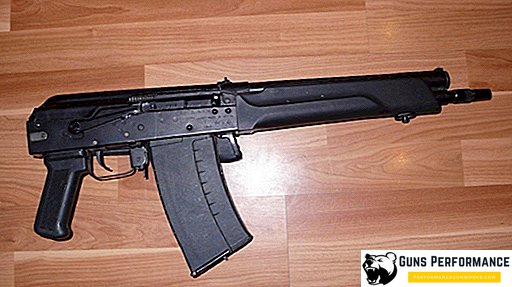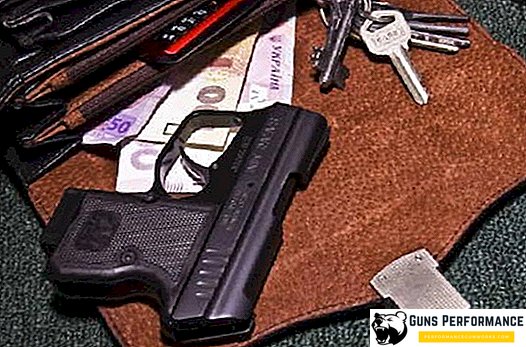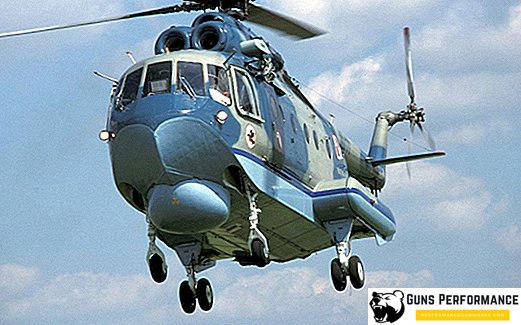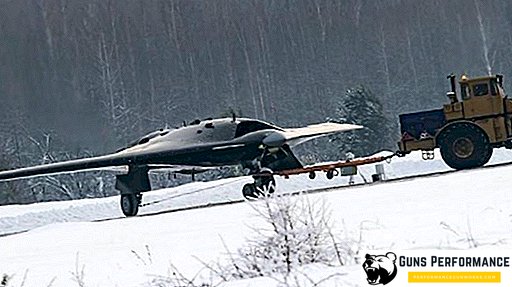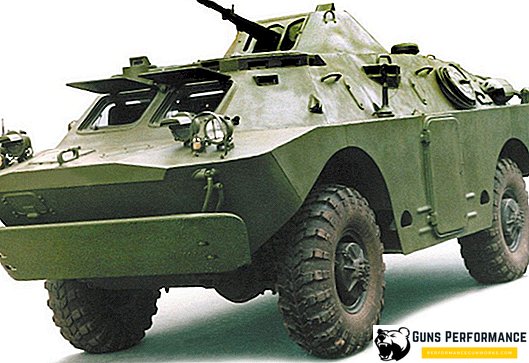
Intelligence and observation of the enemy is the most important component of military art, which makes it possible to adequately assess the forces of the enemy and plan the actions of their own troops. Especially important is tactical intelligence, since it is impossible to wage a modern battle without knowing the capabilities of the enemy, its strengths and weaknesses. The commander needs to know where the enemy’s artillery and armored vehicles are located, what their numbers are, you need to determine the location of their anti-aircraft and anti-tank weapons.
Today, the BRDM-2 reconnaissance vehicle is in service with the units of the Russian army. It has a gasoline engine and a relatively low security, armed with a 14.5-mm machine gun KPVT. Its main advantage is the high permeability. Serial production of the BRDM-2 began in 1963.
The car took part in many conflicts, experienced a lot of upgrades. The design of the BRDM-2 was so successful that even today it is in service with dozens of armies in the world, and its licensed production continues in Poland. The troops affectionately call this war machine "Bardak". However, in Russia, the mass production of the BRDM-2 was completed in 1989.
History of creation
Already during World War II, scouts made extensive use of motorcycles, trucks, and even armored cars. After the war in the USSR, work began on the creation of a specialized armored vehicle for intelligence officers. It had to be distinguished by high maneuverability and to be able to swim, overcome swamps, ravines, rivers and lakes.

This is how the BRDM-1, which went into series in 1957, appeared. However, the operation revealed its serious shortcomings: the patency and ability to overcome water obstacles did not suit the military. The main cause of the problems was a gasoline engine, developed before the war. The armament of the BRDM-1 also left much to be desired: one of the 7.62-mm machine gun SGMB. Shooting from it was necessary to lead leaning to the waist from the hatch, which made the machine gunner vulnerable.
A new reconnaissance vehicle was needed, and already in 1959 a technical task was issued for the production of the BRDM-2.
Its development involved in the KB Gorky Automobile Plant. The military set several tasks for the designers:
- increase the firepower of the BRDM-2;
- increase its permeability;
- improve security;
- install an anti-nuclear protection system.
During this period, the car factory began mass production of the new GAZ-66, so many new components from this model were used at the BRDM. Development of the BRDM-2 was engaged in virtually the same team of designers that created the first reconnaissance vehicle. Therefore, all the advantages of the BRDM-1 were embodied in the new product, while at the same time we managed to get rid of its shortcomings.
In 1960, the tests began. The car had many flaws, but nevertheless in 1962 it was put into service. Initially, the KPVT machine gun was mounted on an open turret, there was no tower. Only by 1963 at the BRDM-2 was equipped with a tower with twin machine guns KPVT and PKT.
Launching machine already occurred during mass production. For the first time, the BRDM-2 was shown to the general public in 1966 at a military parade in Moscow.
Initially, the mass production of the BRDM-2 was organized at the Gorky Automobile Plant; in 1965, the production lines were moved to the Arzamas Machine-Building Plant.

First of all, the BRDM-2 arrived at the arsenal of the intelligence units of the Soviet army, as well as communications and chemical defense troops. According to the state, there were 28 BRDM-2s per tank or motorized rifle division.
Machine device
The layout of the BRDM-2 is classic, there is a control compartment in the front, a fighting compartment in the middle, and a engine compartment in the rear part of the vehicle. The crew consists of four people: the places of the commander and the driver are located in the control department, and the shooter and the observer are in the combat department. The body consists of armored rolled sheets connected by welding. It is sealed, which allows the machine to overcome water obstacles.

In the central part of the body, a tower of conical shape is installed, armed with twin machine guns of a 14.5-mm KPVT and 7.62-mm PKT. Under the tower there is a suspension seat for the gunner. The fire can be led to 180 ° in the horizontal plane, the vertical firing angle is from -5 ° to + 30 °. For shooting there is a periscope sight PP-61A and a pointing drive. From KPVT it is possible to fire at distances of up to 2 thousand meters, and from PKT - up to 1.5 thousand. KPVT is suitable for the destruction of lightly armored enemy vehicles, PKT is used to defeat enemy manpower, his ammunition load is 2 thousand rounds.
In the rear of the housing BRDM-2 is the power compartment. It is separated from the combat compartment by an armored partition. It houses: the engine GAZ-41, gearbox, filtering unit, generator, battery, radiators, a device for starting the engine in manual mode. Low fuel consumption allows the car to overcome 750 km on one refueling.
To observe the environment, the commander has a panorama of TPKU-2B, on which it is possible to install a night vision device. At the disposal of the commander and the driver there are several fixed periscope observation instruments.
The BRDM-2 is equipped with a gasoline V-engine with eight cylinders, its capacity is 140 liters. with. The same engines were put on government cars "Chaika". Capacity of tanks with fuel - 280 liters. Transmission - mechanical, there is one rear and four forward speeds.
The reconnaissance vehicle has a wheeled chassis, it is similar to the BRDM-1. All wheels have a pressure adjustment system, which can be changed when stopping and while driving. Suspension machine spring, on each bridge there are two hydraulic shock absorbers.
Feature BRDM-2 are four additional wheels that can be used to overcome the trenches and trenches. All-wheel drive intelligence vehicles (both main and additional) are leading.
In the aft part of the BRDM-2 there is a water jet that allows the car to reach speeds of up to 10 km / h. A steering wheel is mounted on its outlet nozzle for maneuvering water. The reverse rotation of the propellers provides the BRDM-2 reverse. Water reflective shield improves water safety.
A winch is installed at the front of the machine, the pulling force on the cable is 4 thousand kgf.

Modifications BRDM-2
BRDM-2 is still in service with many armies in the world, although the mass production of the machine was stopped in 1989. Therefore, it is not surprising that the modernization of the BRDM-2 was carried out repeatedly. To date, equipment and assemblies installed on machines 30-40 years ago are outdated both morally and physically.
Experience shows that when finalizing, the BRDM-2 is able to effectively perform reconnaissance functions and be a platform for the installation of various weapons. They use the BRDM-2 and for peaceful purposes, this car turns out to be a great civilian vehicle to overcome off-road.
In the 1990s, several modifications of the BRDM-2 appeared in Russia:
BRDM-2M. This modification was developed at the Arzamas engineering plant. Additional wheels were removed from the construction, a diesel turbodiesel D-245.9 was installed instead of a gasoline engine, and the turret was also replaced. This option was later adopted by the Russian army.
The Muromteplovoz company offered its customers the BRDM-2 with various types of towers with a large elevation angle and various additional weapons (for example, an automatic grenade launcher or a cannon). The machines were installed more powerful engines and modern navigation and communication systems. Dismantling additional wheels allowed to increase the number of crew members to six people.

Many modifications of the machine was made in Ukraine. After the collapse of the USSR, a significant amount of BRDM-2 remained in this country:
BRDM-2LD. Variant of upgrading the machine with the removal of additional wheels and a new diesel engine SMD-21-08. The model was produced at the Nikolaevsk mechanical repair plant.
BRDM-2DI "Khazar". One more modification developed by nikolayevets. Additional wheels replaced by side doors, installed a new IVECO diesel engine and modern weapons systems.

BRDM-2I. Modification of the machine, developed by Vinnitsa 45th Experimental Plant. In it, the gasoline engine is replaced by diesel ISUZU.
BRDM-2MB1. This is a Belarusian car modification. Extra wheels and water cannons were removed, and landing hatches were made instead. A powerful diesel engine, modern communications and surveillance systems, as well as the Adunok combat module are installed on the machine.
MBTS "Cayman". Another modernization of the BRDM-2, carried out in Belarus. The armored glass is installed in the front of the vehicle, the extra wheels are dismantled. The bottom of the car got a V-shape, the gasoline engine was replaced by a modern diesel.
BRDM-2M-96ik Szakal. Modification, created in 2003 in Poland. A powerful diesel engine, a new radio station, air conditioning, and anti-cumulative screens are installed on the machine. KPVT replaced machine gun WKM-B.
This is not a complete list of modifications of the BRDM-2, created in different years in different countries. The main directions of modernization were: replacing the engine with a more powerful one, dismantling additional wheels, complicating the design and making the car heavier, installing modern communication and surveillance systems. Often, when upgrading replaced the main armament of the machine.
Over the years of operation, no less than two dozen varieties of special vehicles were created on the basis of the BRDM-2. The BRDM-2 turned out to be an excellent base for the installation of various anti-tank complexes; almost all the anti-tank systems installed in the USSR were installed on it.
Combat use
The BRDM-2 was used by the Soviet army for many years, this machine was supplied to all the Warsaw Pact member countries and was actively exported beyond its borders. So the record in the BRDM-2 is very solid.
The car took part in the invasion of the troops of the countries of the PD in Czechoslovakia.
The BRDM-2 became the hero of one of the biggest battles of the Doomsday War. On October 6, 1973, the Egyptian army crossed the Suez Canal and was met by an Israeli armored division. With the help of ATMS "Baby", installed on the BRDM-2, more than 150 M48 and M60 tanks were destroyed. No less successfully used BRDM-2 with anti-tank systems against Israeli tanks and in Syria.
Very widely BRDM-2 used in Africa. Due to its simplicity, reliability and low cost, these vehicles are very much loved by the African statesman. Especially a lot of BRDM-2 was in Angola, however, the Cuban soldiers, who used them, noted that the Soviet machine was inferior in defense and combat power to South African armored vehicles.
Used BRDM-2 and in the course of all Iraqi conflicts. The machine was actively used by Soviet troops in Afghanistan and proved itself quite well.
Russian federal forces actively used the BRDM-2 during the first and second Chechen campaigns. It was used by the separatists. The car proved to be poorly adapted to combat operations in urban environments. The level of its security and firepower turned out to be insufficient.
Russia used the BRDM-2 during the war with Georgia in 2008. Now the machine is used by both parties to the conflict in the east of Ukraine.

Specifications
| Mass, t | 7,0 |
| Crew, pers. | 4 |
| Armament | 7.62 mm PCT and 14.5 mm CPVT |
| Length mm | 5750 |
| Width, mm | 2350 |
| Height mm | 2395 |
| Armor thickness, mm | from 7 to 10 |
| Engine | GAZ-41 |
| Engine power, l. with. | 140 |
| Max. speed on the highway, km / h | up to 100 |
| Max. afloat speed, km / h | 8-10 |
| Cruising on the highway, km | up to 750 |


